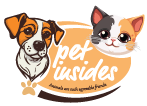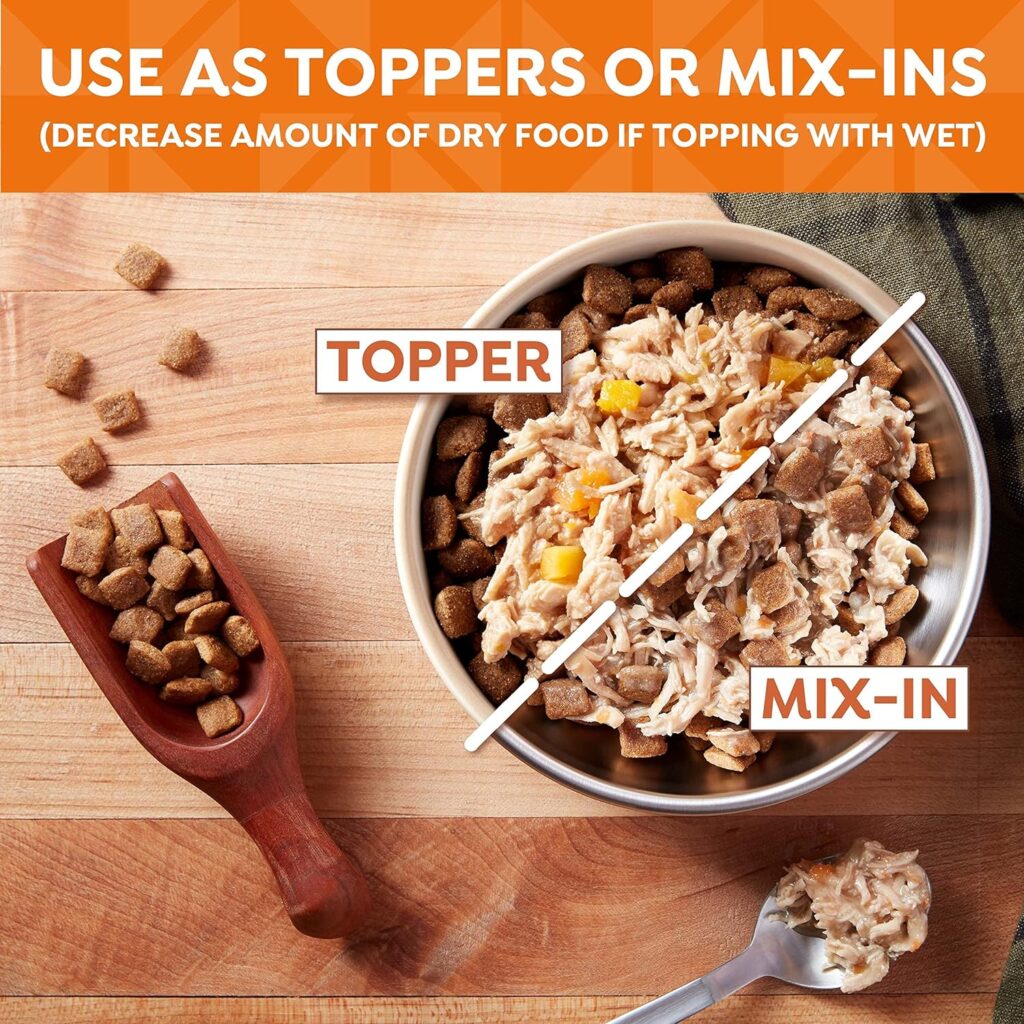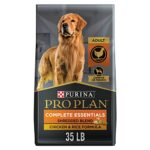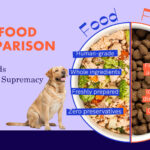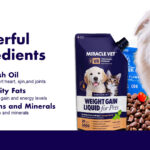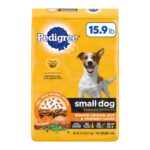Can Dogs Eat Baby Food? Yes, dogs can eat certain types of baby food. Ensure it doesn’t contain harmful ingredients like onions or garlic.
Feeding dogs baby food can be safe and convenient, especially for sick or picky eaters. Baby food often contains simple, easily digestible ingredients. It is essential to check the label for any harmful substances. Choose baby food with pure meat, vegetables, or fruits.
Avoid additives, spices, and artificial flavors. Pureed baby food can be a temporary solution for dogs with dental issues or during recovery from surgery. Always consult your veterinarian before introducing new foods to your dog’s diet. Regular dog food is specially formulated to meet their nutritional needs. Baby food should not replace a balanced diet.
Introduction To Canine Dietary Needs
Understanding the dietary needs of dogs is crucial for their health. Dogs need a diet that supports their growth, energy, and overall well-being. Knowing what foods are safe and nutritious helps in making better feeding choices.
The Importance Of A Balanced Diet
A balanced diet for dogs includes proteins, fats, carbohydrates, vitamins, and minerals. Each component plays a vital role in keeping your dog healthy.
- Proteins: Build and repair tissues.
- Fats: Provide energy and support cell function.
- Carbohydrates: Offer a quick source of energy.
- Vitamins: Boost the immune system and overall health.
- Minerals: Strengthen bones and teeth.
Specific Nutritional Requirements For Dogs
Dogs have unique nutritional requirements that vary by age, size, and health status. Here is a simple table to understand these needs:
| Life Stage | Protein (%) | Fat (%) |
|---|---|---|
| Puppy | 22-32 | 10-25 |
| Adult | 18-25 | 8-15 |
| Senior | 18-23 | 8-12 |
Puppies need more protein and fat for growth. Adults need a balanced diet to maintain energy. Seniors require fewer calories but still need high-quality nutrients.
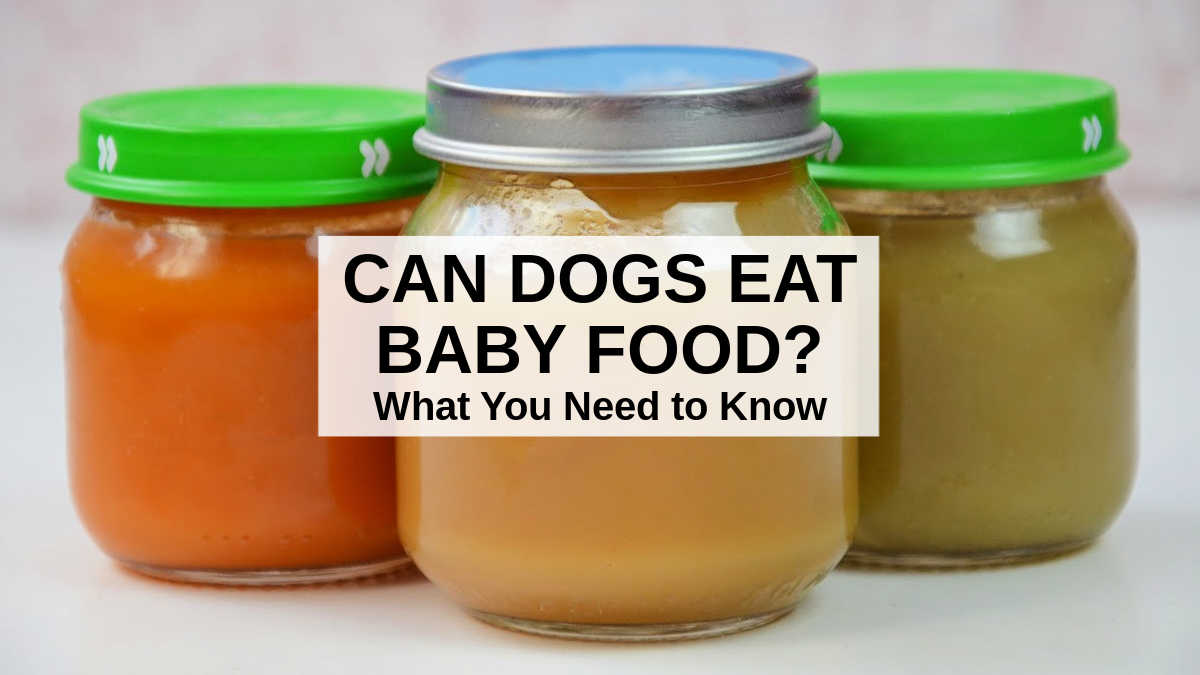
Credit: spoiledhounds.com
The Appeal Of Baby Food For Dogs
Many dog owners find baby food appealing for their furry friends. It is soft, easy to digest, and often free from harmful additives. But is baby food a good choice for your dog? Let’s explore why some owners turn to baby food and what benefits it might offer.
Reasons Owners Consider Baby Food
- Eases Feeding: Baby food can help dogs with dental issues eat comfortably.
- Simple Ingredients: Many baby foods have fewer ingredients, reducing allergy risks.
- Convenient: It is easy to store and serve, making it practical for busy owners.
- Palatable: Dogs often find the taste of baby food appealing.
- Hydration: The moisture content helps keep dogs hydrated.
Potential Benefits For Canine Consumption
Baby food can offer several benefits for dogs. Here are some potential advantages:
- Digestibility: Baby food is easy on a dog’s stomach.
- Nutrient-Rich: It provides essential vitamins and minerals.
- Appetite Stimulation: It can encourage dogs to eat when they are sick.
- Training Aid: Use baby food as a tasty reward during training sessions.
- Hydration Support: The water content helps keep dogs hydrated.
Table: Safe Baby Food Ingredients For Dogs
| Ingredient | Benefit |
|---|---|
| Pureed Carrots | Rich in Vitamin A |
| Applesauce (unsweetened) | Contains Fiber |
| Sweet Potatoes | High in Beta-Carotene |
| Green Beans | Low-Calorie Snack |
| Pumpkin | Good for Digestion |
Analyzing Baby Food Ingredients
Understanding the ingredients in baby food is crucial for dog owners. It ensures safety and health for your furry friend. Analyzing these ingredients helps identify which ones are safe for dogs.
Common Components Of Baby Food
Baby food often contains simple, natural ingredients. These usually include:
- Fruits: Apples, bananas, pears
- Vegetables: Carrots, peas, sweet potatoes
- Grains: Rice, oats
- Proteins: Chicken, beef, lentils
These ingredients are generally safe for dogs. They provide essential nutrients and are easy to digest.
Additives To Watch Out For
Some baby foods contain additives that are harmful to dogs. It’s important to avoid these:
- Onions: Can cause anemia in dogs
- Garlic: Toxic in large amounts
- Spices: Can upset a dog’s stomach
- Artificial sweeteners: Xylitol is extremely dangerous
Always check labels for these harmful ingredients. Keeping your dog safe is a top priority.
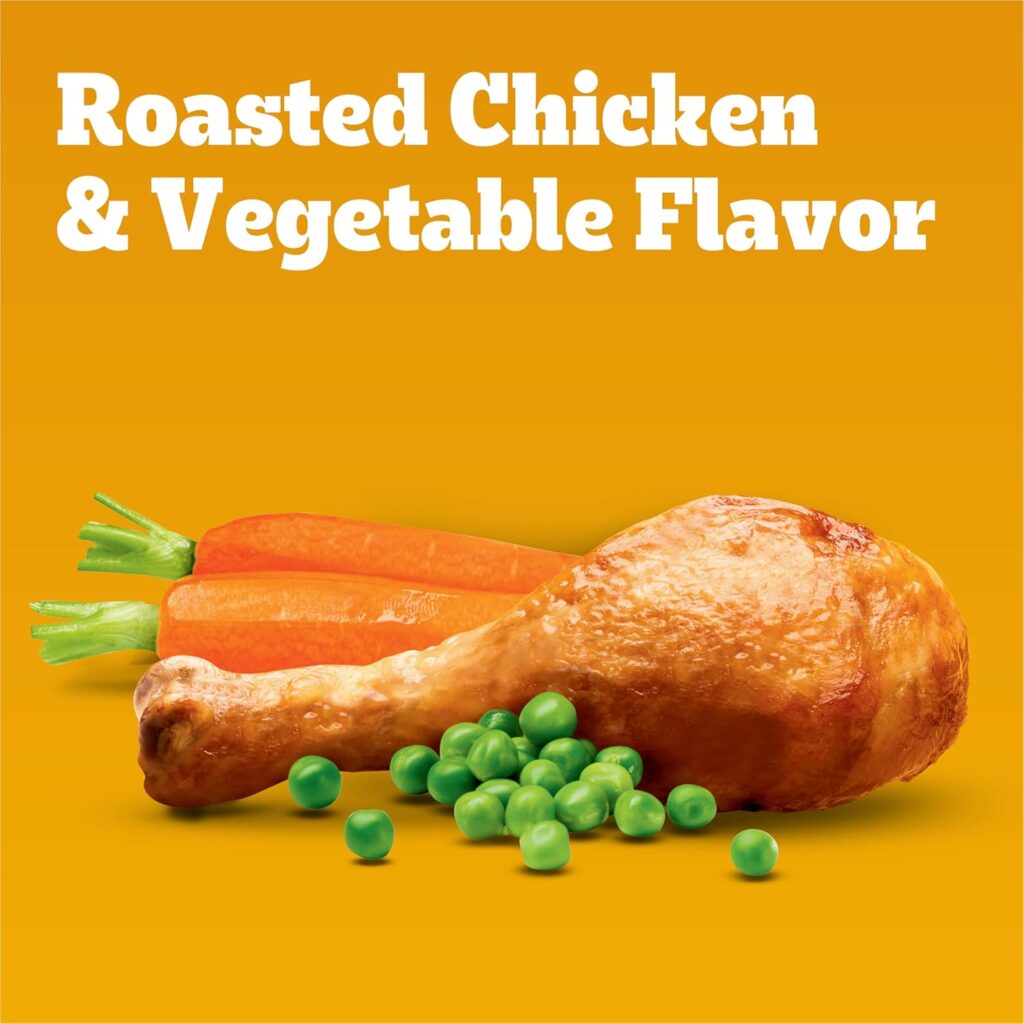
Safety Concerns With Baby Food
Feeding your dog baby food might seem harmless. But there are some safety concerns. Dogs have different dietary needs than humans. Some baby foods can be harmful to them.
Toxic Ingredients For Dogs
Some baby foods contain ingredients that are toxic to dogs. Onions and garlic are common culprits. These can cause serious health issues for your pet.
Here is a table with toxic ingredients found in baby food:
| Ingredient | Effect on Dogs |
|---|---|
| Onions | Can cause anemia |
| Garlic | Leads to digestive problems |
| Grapes | Causes kidney failure |
| Chocolate | Can be fatal |
The Risk Of Allergies
Dogs can be allergic to some ingredients in baby food. Common allergens include dairy, soy, and gluten.
Signs of allergies in dogs:
- Itchy skin
- Vomiting
- Diarrhea
- Swelling
If your dog shows these signs, stop feeding the baby food. Consult your vet for advice.
Situations Where Baby Food May Help
Baby food can be a suitable option for dogs in specific situations. It provides essential nutrients and is easy to digest. Certain conditions make baby food an ideal choice for your furry friend.
Senior Dogs With Dental Issues
Senior dogs often struggle with dental issues. Hard kibble can be painful for them. Baby food is soft and easy to eat. It helps ensure they get their needed nutrients without discomfort.
Here are a few benefits:
- Soft texture reduces pain.
- Easy to chew and swallow.
- Provides essential nutrients.
For older dogs, a balanced diet is crucial. Baby food can be part of that diet.
Dogs With Digestive Sensitivities
Some dogs have digestive sensitivities. They may struggle with regular dog food. Baby food is gentle on the stomach. It contains simple ingredients, reducing the risk of upset stomachs.
Key benefits include:
- Gentle on the digestive system.
- Contains simple, safe ingredients.
- Reduces the risk of allergies.
For dogs with sensitive stomachs, baby food can be a helpful dietary option.
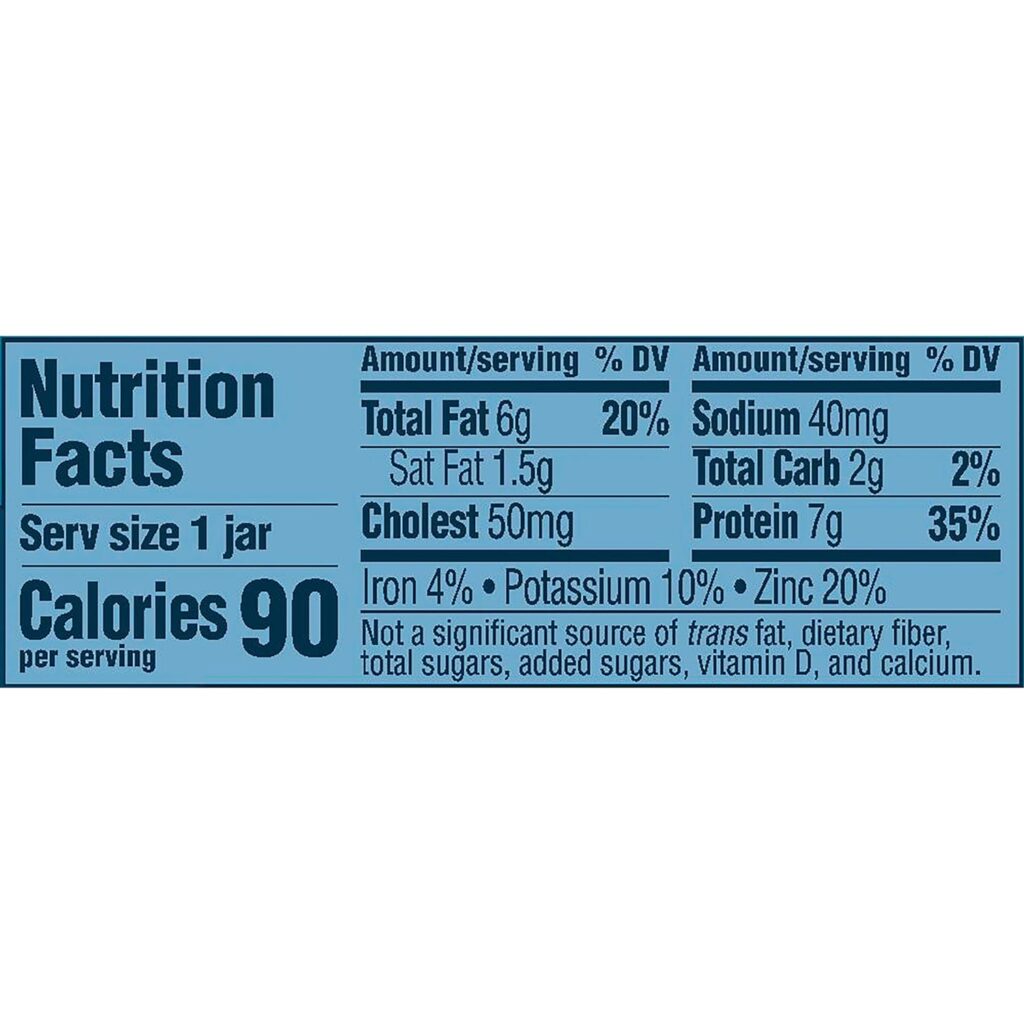
How To Choose The Right Baby Food
Choosing the right baby food for your dog can be tricky. The right baby food ensures your dog gets the nutrients they need. Here, we break down how to pick the best baby food for your furry friend.
Selecting Age-appropriate Options
Not all baby food is the same. Baby food comes in stages. Each stage matches a different age group. For young puppies, start with Stage 1 baby food. This food is pureed and easy to digest.
For older dogs, Stage 2 or Stage 3 baby food may be better. These stages have more texture and variety. Always check the labels to see what stage the food is.
Organic Vs. Non-organic Baby Food
Organic baby food can be a healthier choice. Organic food is free from harmful chemicals and pesticides. This can be safer for your dog’s health.
Non-organic baby food can still be nutritious. Just make sure it does not contain harmful ingredients like garlic or onion. Check the ingredient list carefully before feeding it to your dog.
| Type of Baby Food | Benefits | Considerations |
|---|---|---|
| Organic | Free from chemicals and pesticides | Usually more expensive |
| Non-Organic | Can still be nutritious | Check for harmful ingredients |
- Check Labels: Always read the ingredient list.
- Age-Appropriate: Choose the right stage for your dog’s age.
- Consult Your Vet: Ask for recommendations if unsure.
The Role Of Baby Food In A Dog’s Diet
Many dog owners wonder about the safety of baby food for dogs. Baby food can be beneficial in certain situations. It can supplement nutrition and serve as a medication vehicle. Understanding the proper use of baby food can help you make informed decisions.
Supplementing Nutrition
Dogs sometimes need extra nutrients. Baby food can be an easy way to provide these. It often contains pureed vegetables and meats. These ingredients can be gentle on a dog’s stomach. Ensure the baby food does not contain harmful ingredients like onions or garlic.
| Ingredient | Benefit |
|---|---|
| Pureed Carrots | Rich in vitamins and easy to digest |
| Pureed Chicken | Good source of protein |
| Applesauce (unsweetened) | Provides fiber and vitamins |
Using Baby Food As A Medication Vehicle
Giving medication to dogs can be challenging. Baby food can help. It can mask the taste of medicine. This makes it easier for your dog to consume. Choose simple, single-ingredient baby foods for this purpose.
- Pureed Sweet Potatoes: Hide tablets inside for easy ingestion.
- Plain Yogurt: Mix liquid medicine for better taste.
- Mashed Peas: Blend with crushed pills to disguise them.
Always consult your vet before adding new foods to your dog’s diet. This ensures it is safe and beneficial for your pet.
Portion Control And Frequency
Feeding your dog baby food can be a great idea. But it is crucial to manage portion control and frequency. Overfeeding can lead to weight gain and other health problems. Proper portioning ensures your dog gets the right nutrients without overconsumption.
Determining The Correct Serving Size
Determining the correct serving size is vital. A good rule of thumb is to use baby food as a treat, not a main meal. For small dogs, one to two tablespoons of baby food is enough. Medium-sized dogs can have three to four tablespoons. Large dogs can have up to five tablespoons.
Always consider your dog’s weight and health condition. Consult your vet for personalized advice. Keep a close eye on your dog’s reaction to new foods.
Incorporating Baby Food Into Regular Meals
Mixing baby food into your dog’s regular meals can be simple. Just add a small amount to their kibble or wet food. This can enhance the flavor and make meals more exciting.
Use baby food as a topping rather than the main ingredient. This way, your dog gets a balanced diet. You can create a schedule for baby food treats. For instance, offer it twice a week to avoid overfeeding.
| Dog Size | Serving Size | Frequency |
|---|---|---|
| Small | 1-2 tablespoons | 2 times a week |
| Medium | 3-4 tablespoons | 2 times a week |
| Large | Up to 5 tablespoons | 2 times a week |
Remember, moderation is key. Too much baby food can cause digestive issues. Always observe your dog’s response to new foods.
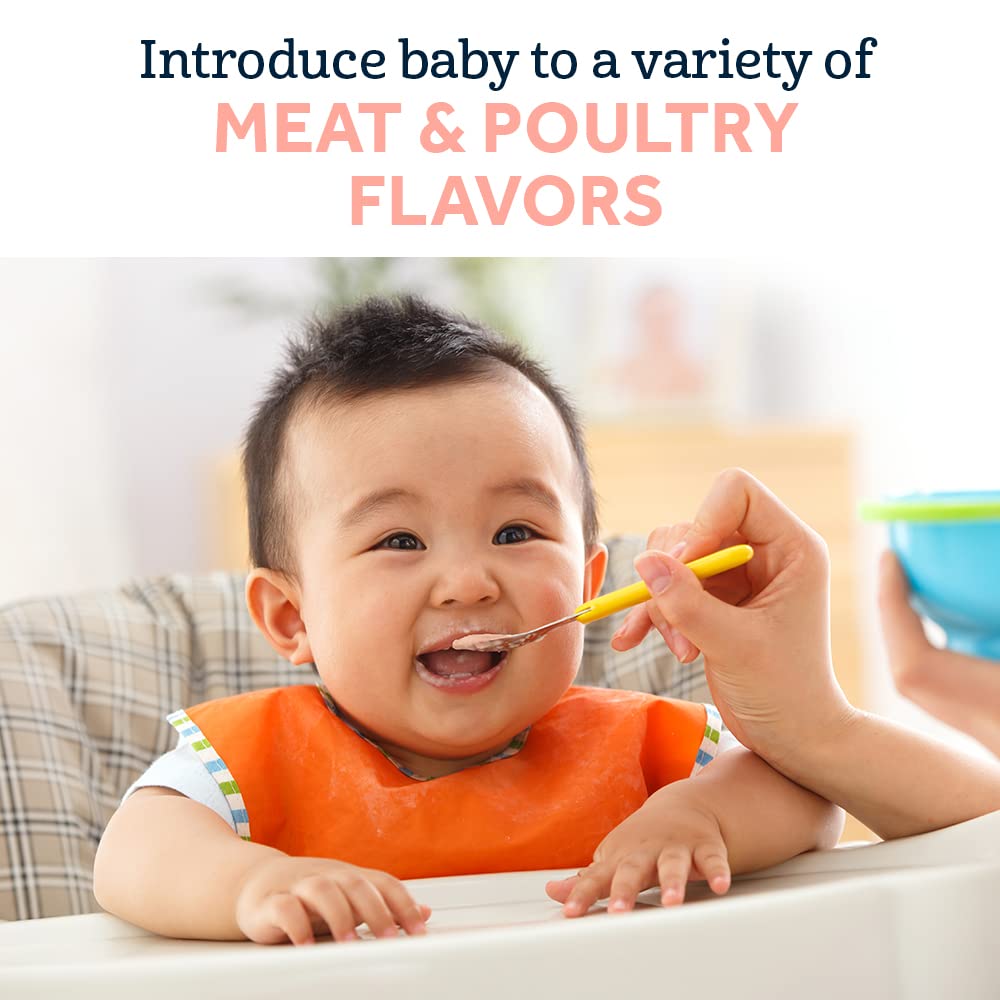
Preparing Homemade Baby Food For Dogs
Making homemade baby food for your dog can be a healthy option. It ensures your pet gets fresh, nutritious meals. This section covers safe ingredients and foods to avoid.
Safe Ingredients To Use
Using safe ingredients is crucial for making baby food for dogs. Here is a list of safe ingredients:
- Carrots: Rich in vitamins and easy to digest.
- Peas: High in fiber and protein.
- Sweet Potatoes: Packed with vitamins and minerals.
- Apples: Provide fiber and vitamins (remove seeds).
- Blueberries: High in antioxidants and low in calories.
- Chicken: Lean protein source, cooked without seasoning.
Avoiding Unsafe Foods And Spices
Some foods and spices are harmful to dogs. Avoid these to keep your dog safe:
- Garlic and Onions: These can damage red blood cells.
- Grapes and Raisins: Can cause kidney failure.
- Chocolate: Contains theobromine, toxic to dogs.
- Avocado: Contains persin, which can be harmful.
- Nutmeg: Can cause severe digestive issues.
- Salty Foods: High salt can lead to sodium poisoning.
Using safe ingredients and avoiding harmful foods ensures your dog enjoys healthy homemade meals. Always consult your vet before introducing new foods.

Credit: www.pinterest.com
Veterinary Insight On Feeding Baby Food
Many pet owners wonder if baby food is safe for dogs. Veterinarians provide valuable insights into this topic. Understanding their recommendations ensures the health and well-being of your furry friend.
Professional Recommendations
Veterinarians agree that not all baby foods are safe for dogs. Some baby foods contain ingredients harmful to dogs. Always check the label before feeding any baby food to your dog.
Here are some guidelines:
- Avoid baby foods with onion or garlic powder.
- Choose plain meats, vegetables, or fruits.
- Look for baby foods without added sugars or salts.
| Safe Ingredients | Unsafe Ingredients |
|---|---|
| Plain chicken | Onion powder |
| Sweet potatoes | Garlic powder |
| Pumpkin | Added sugars |
When To Consult Your Vet
Always consult your vet before introducing new foods to your dog’s diet. If your dog has allergies or a sensitive stomach, this step is crucial.
Consult your vet if:
- Your dog has existing health conditions.
- You notice any adverse reactions after feeding baby food.
- You are unsure about the ingredients in baby food.
Veterinarians provide the best advice tailored to your dog’s needs. Your dog’s health should always come first.
Alternative Soft Food Options
When your dog needs soft food, many options are available. Whether due to dental issues, age, or recovery from surgery, it’s crucial to find the right food. Below are some alternative soft food options that cater to their needs.
Commercial Dog Food Formulas
Many brands offer soft food formulas specifically for dogs. These are easy to find in pet stores and online.
- Wet Dog Food: Comes in cans or pouches. It is soft and palatable.
- Soft Kibble: Some brands offer softer kibble. These are easier to chew.
- Specialty Diets: Formulas for senior dogs and those with dental issues.
A table below lists some popular commercial soft food options:
| Brand | Type | Features |
|---|---|---|
| Blue Buffalo | Wet Food | Grain-free, natural ingredients |
| Hill’s Science Diet | Soft Kibble | Formulated for senior dogs |
| Royal Canin | Specialty Diet | Dental health-focused |
Natural Soft Foods For Dogs
Some natural foods are also great soft options for dogs. They are easy to prepare and healthy.
- Mashed Sweet Potatoes: High in fiber and vitamins.
- Cooked Carrots: Soft and rich in beta-carotene.
- Boiled Chicken: Plain, shredded chicken is protein-rich.
- Scrambled Eggs: Easy to digest and packed with protein.
It’s essential to ensure these foods are plain, without seasoning. This way, they remain safe for your dog.
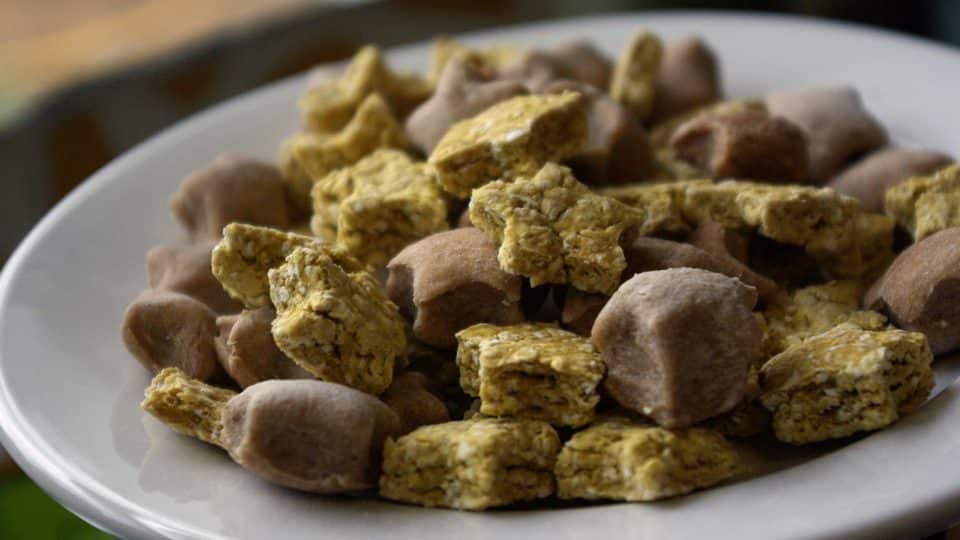
Credit: www.rover.com
Transitioning Back To Regular Dog Food
Once your dog has recovered, you can start transitioning them back to regular dog food. This process needs to be done carefully to avoid upsetting your dog’s stomach. Gradually introducing regular food ensures they adjust well and remain healthy.
Steps For A Smooth Transition
Follow these steps to transition your dog back to their regular diet:
- Start with Small Portions: Mix a small amount of regular food with baby food. Gradually increase the portion of regular food over a week.
- Monitor for Reactions: Watch for any signs of digestive upset or allergies.
- Maintain Hydration: Ensure your dog drinks plenty of water throughout the transition.
- Stick to a Schedule: Feed your dog at the same times each day.
- Gradual Increase: Slowly increase the ratio of regular food to baby food each day.
Signs Of Readiness In Your Dog
Look for these signs to know if your dog is ready to transition back:
- Normal Appetite: Your dog shows interest in their regular food.
- Regular Bowel Movements: Consistent and healthy stools indicate good digestion.
- Energy Levels: Your dog is active and playful.
- No Signs of Discomfort: No vomiting, diarrhea, or signs of pain.
If you notice these signs, your dog is likely ready to switch back to their regular food.
Case Studies And Anecdotal Evidence
In this section, we’ll explore case studies and anecdotal evidence about dogs eating baby food. These real-life experiences can help you understand the potential benefits and risks. Below, we share both success stories and cautionary tales to give you a balanced view.
Success Stories Of Baby Food Diets
Many dog owners have shared positive experiences with baby food diets. These success stories reveal how baby food can be beneficial for dogs.
- Improved Appetite: Some dogs refuse to eat regular dog food. Baby food can tempt picky eaters.
- Easy Digestion: Dogs with sensitive stomachs often digest baby food better.
- Convenient for Medication: Mixing medicine with baby food makes it easier to administer.
A dog owner named Sarah said her elderly dog regained strength after switching to baby food. She noticed an increase in energy and overall health.
Cautionary Tales To Consider
While there are success stories, there are also cautionary tales you should consider. Some dogs have had negative reactions to baby food.
| Issue | Details |
|---|---|
| Allergies | Some dogs are allergic to ingredients in baby food. |
| High Sugar Content | Some baby foods contain added sugars, which are bad for dogs. |
| Sodium Levels | High sodium content can be harmful to dogs. |
A dog named Max developed a rash after eating baby food containing certain spices. His owner had to switch back to regular dog food immediately.
Myths Vs. Facts About Baby Food For Dogs
Feeding baby food to dogs can be confusing. Some people believe it’s safe, while others think it’s harmful. Let’s explore the myths and facts to understand better.
Debunking Common Misconceptions
Many myths exist about dogs and baby food. Let’s debunk some common ones.
- Myth: All baby food is safe for dogs.
- Fact: Not all baby food is safe. Some contain harmful ingredients.
Some baby foods contain onions or garlic. These are toxic to dogs. Always read labels carefully.
Myth: Baby food helps sick dogs recover quickly.
Fact: Baby food can help, but consult your vet first. Some ingredients may not be suitable for sick dogs.
Truths Backed By Science
Science provides some clear guidelines about baby food for dogs. Here are some truths.
- Truth: Simple baby foods with single ingredients are often safe.
- Truth: Avoid baby food with added sugars or salts.
Single-ingredient baby foods like pureed meat or vegetables are usually safe. These can be a good option in small amounts.
Truth: Baby food can be a temporary solution.
In emergencies, baby food can be a temporary diet. Always transition back to dog food slowly.
| Safe Baby Foods | Unsafe Baby Foods |
|---|---|
| Plain pureed meat | Foods with onions |
| Pureed vegetables | Foods with garlic |
| Plain fruit purees | Foods with added sugars |
Concluding Thoughts On Baby Food For Dogs
Feeding baby food to dogs can be a practical solution in certain situations. It’s important to remember that not all baby foods are safe for dogs. Certain ingredients can be harmful or even toxic. Understanding what is safe and how to feed it responsibly can ensure the well-being of your furry friend.
Key Takeaways
- Not all baby foods are safe for dogs. Always check ingredients.
- Avoid baby food with onion, garlic, or high sugar. These are toxic.
- Use baby food as a temporary solution. It’s not a permanent diet.
- Consult your vet before making any changes. Ensure it’s safe.
Best Practices For Responsible Feeding
Feeding baby food to dogs should be done responsibly. Follow these practices to ensure your dog stays healthy:
- Read labels carefully. Avoid harmful ingredients like onion and garlic.
- Choose plain, simple baby foods. Look for single-ingredient options.
- Introduce baby food slowly. Watch for any adverse reactions.
- Use baby food for short-term feeding only. It’s not a balanced diet.
- Consult your veterinarian. Get professional advice tailored to your dog.
Below is a simple table summarizing safe and unsafe ingredients in baby food for dogs:
| Safe Ingredients | Unsafe Ingredients |
|---|---|
| Plain meat (chicken, beef) | Onion |
| Plain vegetables (carrots, peas) | Garlic |
| Plain fruits (apples, bananas) | High sugar content |
By following these best practices, you can safely incorporate baby food into your dog’s diet when needed. Always prioritize your dog’s health and well-being.
Frequently Asked Questions
Which Baby Food Is Safe For Dogs?
Plain, unsweetened baby food containing meats, vegetables, or fruits is generally safe for dogs. Avoid foods with onions, garlic, or added sugars. Always check ingredients and consult your vet.
Can Dogs Eat Gerber Baby Food?
Yes, dogs can eat Gerber baby food in small amounts. Choose plain meat or vegetable varieties without harmful ingredients. Always consult your vet.
Can Sick Dogs Eat Baby Food?
Yes, sick dogs can eat baby food. Choose plain, meat-based baby foods without harmful additives like onions or garlic. Consult your vet.
Can I Put Baby Food On My Dog’s Lick Mat?
Yes, you can put baby food on a dog’s lick mat. Ensure the baby food is free from harmful ingredients like onions, garlic, or excessive salt. Always check with your vet before introducing new foods.
Conclusion
Feeding baby food to dogs can be safe if chosen wisely. Always check ingredients for harmful substances. Consult your vet before introducing new foods. Remember, moderation is key to maintaining your dog’s health. With proper guidance, you can provide a varied diet that keeps your furry friend happy and healthy.
